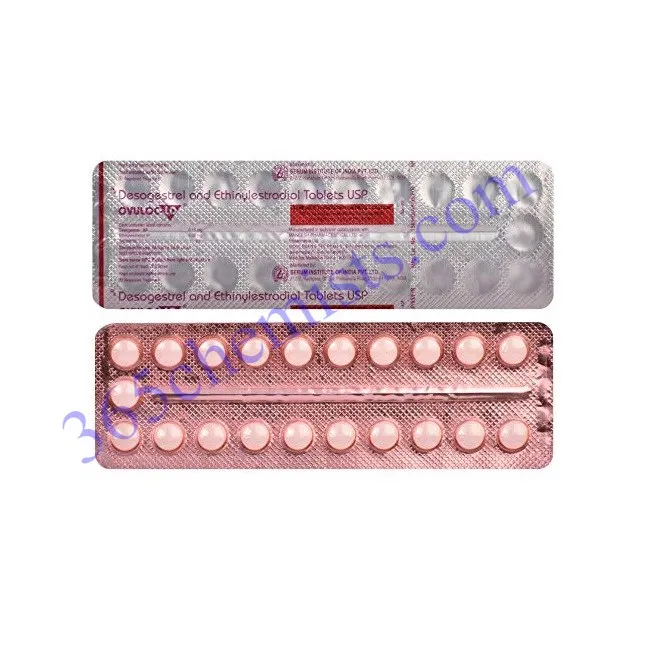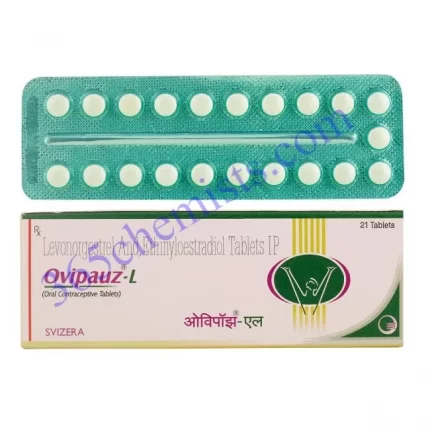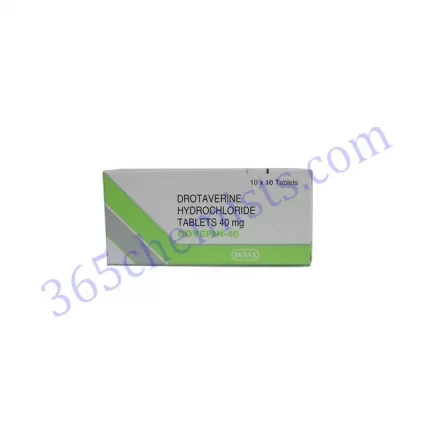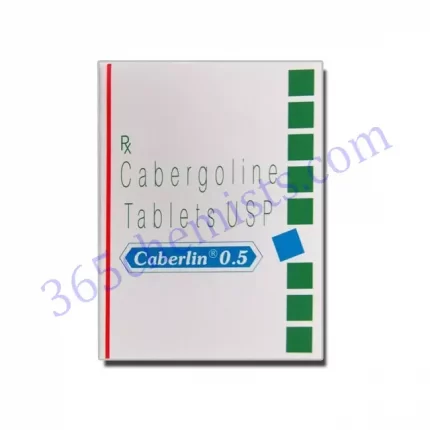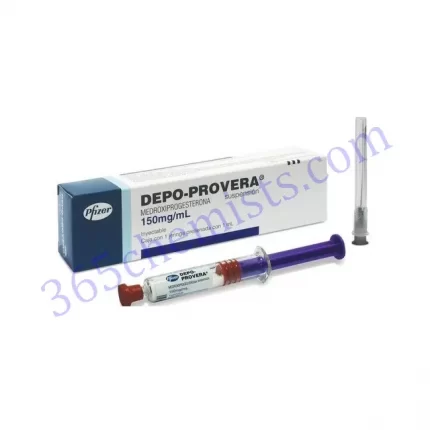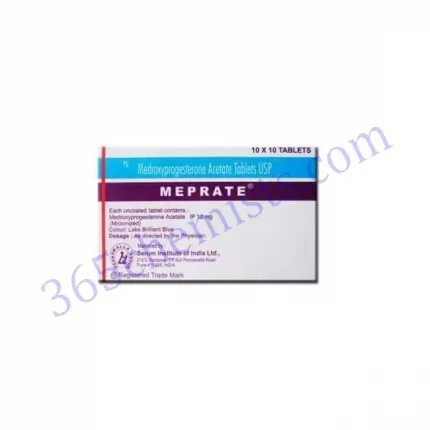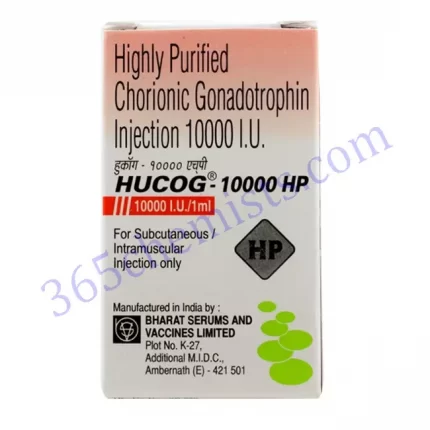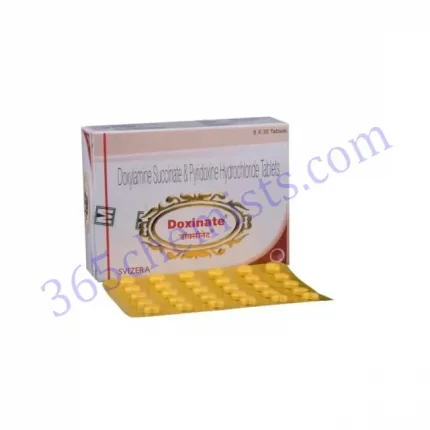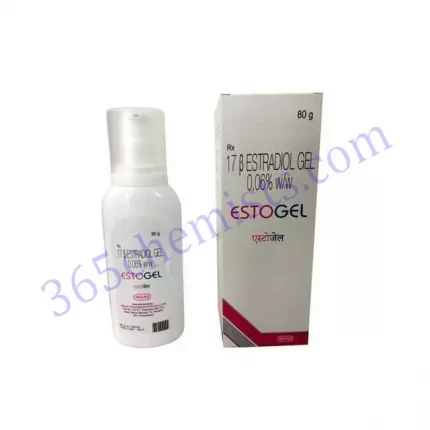Ovuloc LD Tablet (Ethinyl Estradiol 0.02mg/Desogestrel 0.15mg)
Ethinyl Estradiol and Desogestrel are the active ingredients in Ovuloc LD Tablet, which is a combination oral contraceptive that comes in the form of a tablet. It is a method of contraception that is widely utilised by women today. The purpose of this article is to provide a comprehensive description of the Ovuloc LD Tablet, including its mechanism of action, effectiveness as a contraceptive, recommended dosage, potential side effects, and important precautions to take into consideration.
Mechanism of Action
Ethinyl Estradiol and Desogestrel both work to prevent pregnancy, and the Ovuloc LD Tablet does this by combining their respective effects. Desogestrel is a synthetic form of the female hormone progestin, whereas ethinyl estradiol is a synthetic form of the hormone oestrogen. Together, these factors inhibit ovulation, which is the process by which an egg is released from the ovary. Additionally, the cervical mucus is thickened in order to prevent sperm from reaching the egg, and the lining of the uterus is altered in order to make it less receptive to implantation. Ovuloc LD Tablet is an effective method of birth control because it works on multiple levels simultaneously.
Effectiveness as a Contraceptive
Ovuloc LD Tablet is extremely effective in the prevention of pregnancy when it is used as directed and on a consistent basis. If you want the tablet to continue to be effective, you need to make sure that you take it at the same time every day. Even if an individual follows the instructions for using an oral contraceptive like Ovuloc LD Tablet exactly as they are written, there is still a remote possibility that they could become pregnant. Consultation with a qualified medical professional regarding the efficacy of Ovuloc LD Tablet and its correct administration is strongly recommended.
Dosage and Administration
One tablet of the Ovuloc LD Tablet should be taken orally once daily, preferably at the same time each day, for the duration of a 28-day cycle. This is the recommended dosage. The tablet pack is designed to make it simple to keep track of the amount of medication taken on a daily basis, and it contains active tablets for the first 21 days and placebo tablets for the remaining 7 days. It is essential to take the medication exactly as instructed, both in terms of the dosage that has been prescribed and how it should be administered. These instructions can either come from a medical professional or from the patient information leaflet.
Potential Side Effects
Side effects from taking Ovuloc LD Tablet are possible, though not everyone will end up experiencing them. Nausea, breast tenderness, headaches, irregular bleeding or spotting, and changes in mood are some of the common adverse effects that may occur. These adverse effects are typically mild and transient, and after a few months of treatment, they frequently go away on their own. Serious adverse effects, such as blood clots or allergic reactions, have been known to occur in extremely rare instances. Seek immediate medical attention in the event that any symptoms, particularly those that are severe or persistent.
Benefits of Ovuloc LD Tablet
In addition to its use as a contraceptive, the Ovuloc LD Tablet has a number of other advantages. To begin, it assists in the regulation of the menstrual cycle, which results in periods that are more regular and less heavy. The second benefit is that it has the potential to improve acne and lessen the severity of hormonal acne in some people. Thirdly, it may alleviate the symptoms of premenstrual syndrome (PMS), such as bloating and mood swings. PMS is an acronym for premenstrual syndrome. It is essential to keep in mind, however, that responses to Ovuloc LD Tablet may vary from person to person, and not everyone will enjoy the same benefits from taking the medication.
Discontinuation and Switching
In the event that it is decided to stop using Ovuloc LD Tablet or to switch to another method of birth control, it is recommended that the procedure be discussed with a medical expert. If you suddenly stop taking the medication without first consulting with your doctor, you could experience abnormal bleeding or an increased risk of becoming pregnant. It is essential to adhere to the recommended discontinuation guidelines and make use of additional methods of birth control in the event that this becomes necessary.
Precautions and Considerations
The Ovuloc LD Tablet is not appropriate for everyone and should only be utilised with extreme caution in specific settings. It is essential to provide the healthcare professional with complete and accurate information regarding any pre-existing medical conditions, allergies, and medications that are currently being taken. It is possible that women who have had a history of blood clots, certain cancers, liver disease, or high blood pressure that is not under control should not take the Ovuloc LD Tablet. Additionally, it is essential to keep in mind that the Ovuloc LD Tablet does not provide protection against sexually transmitted infections (STIs) and should not be relied upon as a method of STI prevention. For this reason, the use of additional barrier methods, such as condoms, is strongly recommended.
Conclusion
Oral contraceptive Ovuloc LD Tablet (Ethinyl Estradiol 0.02mg/Desogestrel 0.15mg) is a form of birth control that, when used appropriately and continuously, is capable of delivering effective birth control. Ovuloc LD Tablet is able to effectively prevent pregnancy because it blocks ovulation, increases the thickness of cervical mucus, and changes the lining of the uterus. These effects are brought about by the combination of the actions of Ethinyl Estradiol and Desogestrel. However, it is essential to use Ovuloc LD Tablet in accordance with the instructions provided by a healthcare professional and to have a conversation with that professional about any concerns or potential interactions prior to beginning treatment with the medication. Ovuloc LD Tablet has the potential to be an effective method of birth control for women when used correctly and in conjunction with medical supervision.

